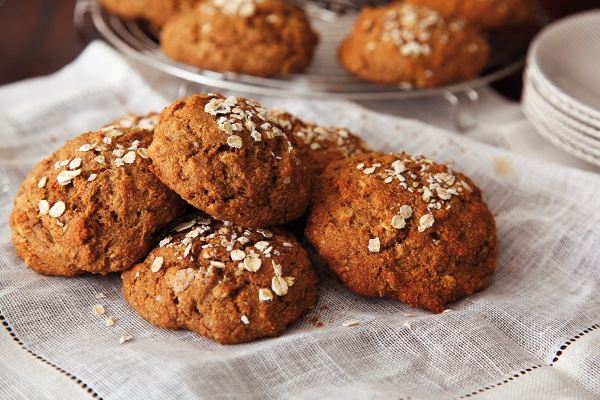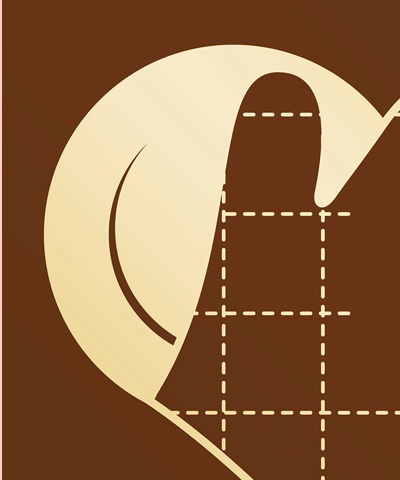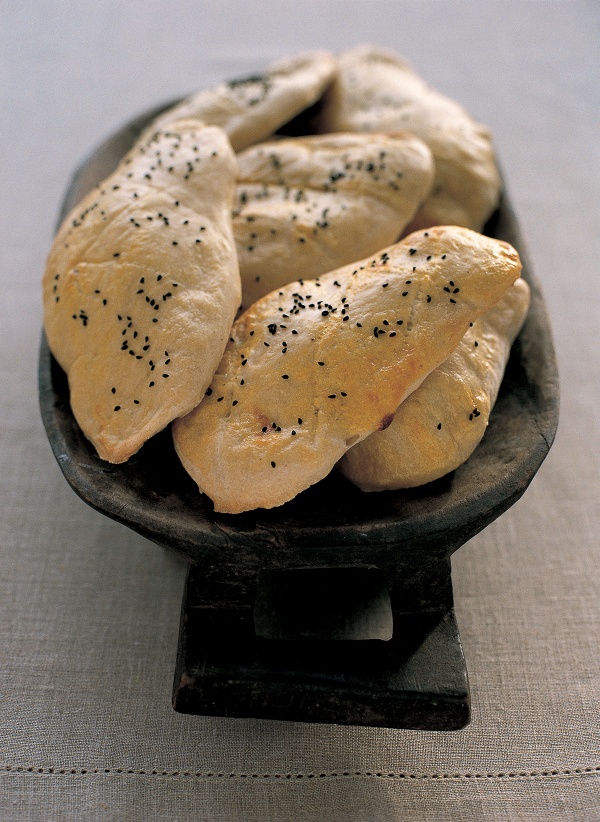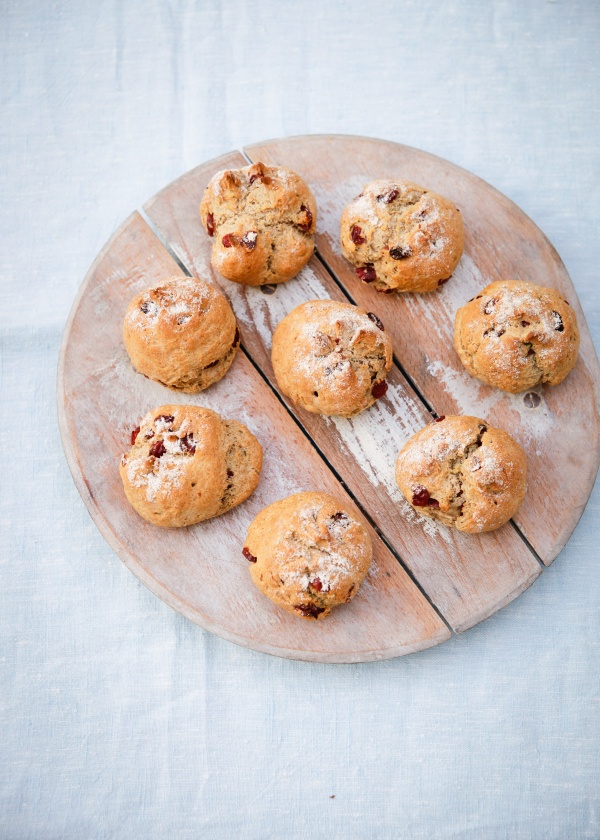Irish Oaten Rolls
by Nigella. Featured in KITCHENIntroduction
The only drawback (and it may not necessarily be one) with these quick-summoned rolls is that they aren't in the oven for long enough to bake up much of a crust; if you have the time to spare, you can turn this into a loaf by forming it into one large round, and baking it for 10 minutes at 220°C/200°C Fan/gas mark 7/425°F before turning the oven down to 190°C/170°C Fan/gas mark 5/375°F and giving it another 25 minutes; when cooked, it'll give a faintly hollow sound if you knock with your knuckles against the underside.
This bread, whether made to form 1 big loaf or 12 rolls, is perfect with everything, but most of all still warm with some good butter slowly melting on top. But you have to hope that some is left over, as it's hard to beat, too, when cold and smeared thickly with butter and jam.
You can make buttermilk by adding 2¼ teaspoons of lemon juice to 150ml semi-skimmed milk / ⅔ cup 2% milk.
The only drawback (and it may not necessarily be one) with these quick-summoned rolls is that they aren't in the oven for long enough to bake up much of a crust; if you have the time to spare, you can turn this into a loaf by forming it into one large round, and baking it for 10 minutes at 220°C/200°C Fan/gas mark 7/425°F before turning the oven down to 190°C/170°C Fan/gas mark 5/375°F and giving it another 25 minutes; when cooked, it'll give a faintly hollow sound if you knock with your knuckles against the underside.
This bread, whether made to form 1 big loaf or 12 rolls, is perfect with everything, but most of all still warm with some good butter slowly melting on top. But you have to hope that some is left over, as it's hard to beat, too, when cold and smeared thickly with butter and jam.
You can make buttermilk by adding 2¼ teaspoons of lemon juice to 150ml semi-skimmed milk / ⅔ cup 2% milk.

Share or save this
Ingredients
Makes: 12 rolls or 1 big loaf
- 400 grams wholemeal flour
- 100 grams oats (not instant) - plus 2 teaspoons more
- 2 teaspoons Maldon sea salt flakes or 1 teaspoon pouring salt
- 2 teaspoons bicarbonate of soda
- 300 millilitres stout, such as Guinness - or flat beer
- 150 millilitres buttermilk or runny plain yogurt
- 4 x 15ml tablespoons groundnut oil or other vegetable oil
- 4 x 15ml tablespoons runny honey
- 3¼ cups whole wheat flour
- 1 cup oats (not instant) - plus 2 teaspoons more
- 2 teaspoons kosher salt or 1 teaspoon pouring salt
- 2 teaspoons baking soda
- 1¼ cups stout, such as Guinness - or flat beer
- ⅔ cup buttermilk or runny plain yogurt
- ¼ cup peanut oil or other vegetable oil
- ¼ cup honey
Method
- Preheat the oven to 220°C/200°C Fan/gas mark 7/425°F.
- Line a baking sheet with baking parchment or a reusable baking liner.
- In a bowl, mix the flour, oats, salt and bicarb.
- In a jug, mix the stout, buttermilk (or runny plain yogurt), oil and runny honey. For ease, measure out the oil in an American quarter cup (60ml) or espresso cup, and then do ditto with the runny honey, as the oil lining will stop the runny honey from sticking. Stir the liquids together with a wooden spoon.
- Add the liquids to the dry ingredients and stir with the wooden spoon to combine — you will get a sandy porridge, rather than a dough: at first, it will seem too runny but then, as the bicarb goes to work, it will become first moussy and then heavy like damp sand.
- Pat into small handfuls to form 12 mounds on the lined tray; don't bother to shape them until all 12 are laid out and you can see which rolls need to have dough pinched off and which need to be bulked up, so that they are more or less of even size. When you've finished, pat each into a rough round roll shape about 7cm/3in diameter by 2-3cm/1in high.
- Sprinkle the remaining 2 teaspoons oats over the rolls (a fat pinch each) and pop them in the oven for 15 minutes then transfer, 1 by 1, to a wire rack to cool just a little. Eat warm, or leave to reach room temperature. Soda bread is always best eaten on the day of baking, though reheating or toasting can revive a roll or slice of bread a day or two later.
- Preheat the oven to 220°C/200°C Fan/gas mark 7/425°F.
- Line a baking sheet with baking parchment or a reusable baking liner.
- In a bowl, mix the flour, oats, salt and bicarb.
- In a jug, mix the stout, buttermilk (or runny plain yogurt), oil and honey. For ease, measure out the oil in an American quarter cup (60ml) or espresso cup, and then do ditto with the honey, as the oil lining will stop the honey from sticking. Stir the liquids together with a wooden spoon.
- Add the liquids to the dry ingredients and stir with the wooden spoon to combine — you will get a sandy porridge, rather than a dough: at first, it will seem too runny but then, as the bicarb goes to work, it will become first moussy and then heavy like damp sand.
- Pat into small handfuls to form 12 mounds on the lined tray; don't bother to shape them until all 12 are laid out and you can see which rolls need to have dough pinched off and which need to be bulked up, so that they are more or less of even size. When you've finished, pat each into a rough round roll shape about 7cm/3in diameter by 2-3cm/1in high.
- Sprinkle the remaining 2 teaspoons oats over the rolls (a fat pinch each) and pop them in the oven for 15 minutes then transfer, 1 by 1, to a wire rack to cool just a little. Eat warm, or leave to reach room temperature. Soda bread is always best eaten on the day of baking, though reheating or toasting can revive a roll or slice of bread a day or two later.
Additional Information
MAKE AHEAD:
Best eaten on the day they are made but the rolls will keep for 1-2 days, wrapped in a clean tea towel in the bread bin or an airtight container in a cool place. Reheat in an oven preheated to 180°C/160°C Fan/gas mark 4/350°F for 5-10 minutes (best for the day after making). The rolls can also be split in half and toasted (best for 2 days after baking).
FREEZE:
The rolls can be frozen for up to 1 month in a tightly sealed freezer bag. Defrost for 2-3 hours at room temperature and reheat as above. The rolls may be slightly crumbly after defrosting.
MAKE AHEAD:
Best eaten on the day they are made but the rolls will keep for 1-2 days, wrapped in a clean tea towel in the bread bin or an airtight container in a cool place. Reheat in an oven preheated to 180°C/160°C Fan/gas mark 4/350°F for 5-10 minutes (best for the day after making). The rolls can also be split in half and toasted (best for 2 days after baking).
FREEZE:
The rolls can be frozen for up to 1 month in a tightly sealed freezer bag. Defrost for 2-3 hours at room temperature and reheat as above. The rolls may be slightly crumbly after defrosting.






Tell us what you think
Thank you {% member.data['first-name'] %}.
Explore more recipesYour comment has been submitted.